79 F. high on Sunday in the Twin Cities.
72 F. average high on May 25.
62 F. high on May 25, 2013.
.16" rain predicted by Tuesday night at KMSP.
80s likely Wednesday into Saturday.
Super Heroes
We often escape to 18 screen movie theaters to cheer on our favorite super heroes, when in fact, they're all around us.
I'm
proud of both my sons. One is a digital media entrepreneur with an up
and coming blues band. The other is a Navy helicopter pilot. His daily
sacrifices remind me how lucky we all are to have such dedicated
soldiers defending this grand and fragile experiment we call America.
A
modest suggestion: instead of just thanking troops and veterans for
their service take the next step. Ask how their families are doing - if
you can help them find the right job - and if they're getting the care
they need to move forward. Treat them like your sons and daughters
because, in a way, they are.
A well-timed warm front just sparked
the first 80s in nearly 8 months. This jolt of tropical air fuels a few
T-storms today - it won't be nearly as photogenic as the past 2 days.
Speaking
of weather-whiplash, we go from whining about 40s and wind chill to
complaining about the heat this week. I see a streak of 80s, possibly
90F later this week with a dew point that could make one long for April.
Yes, be careful what you wish for. Calendar, notwithstanding, summer is
here!
Happy Memorial Day.
Photo credit above:
http://respect-our-troops.tumblr.com/
Looks Like Summer.
Depending on cloud cover highs may top 80F again today; a better chance
of 80s Wednesday into Saturday before cooling off next week. Expect
scattered T-storms today into Tuesday, then a run of mostly dry weather
(the atmosphere "capped") Wednesday into Saturday morning before a
cooler front sparks T-storms Saturday PM hours.
America's Moisture Haves and Have-Nots.
Dry weather persists over the southwestern USA into next Sunday, while
heavy showers and T-storms fire up from the Plains and Upper Midwest to
New England. A Pacific storm pinwheels heavy showers into the Pacific
Northwest. Loop: NOAA NAM and HAMweather.
7-Day Rainfall Prediction.
NOAA guidance is printing out some 4-5" rainfall amounts over Oklahoma
and Texas, which may take the edge off the worst of the (exceptional)
drought in the coming days. The drought continues to worsen from New
Mexico and Arizona to California.
Hurricane Amanda: Category 4 Strength Storm Not Expected to Hit any Populated Areas Along It's Path. Strongest hurricane ever measured in the eastern Pacific in May? More details from
International Business Times: "...
Amanda
is now the strongest May hurricane on record in the eastern Pacific
basin during the satellite era," Stacy Stewart, U.S. National Hurricane
Center senior hurricane specialist, said. The system is expected to
continue moving northward, well off Mexico's Pacific coast. Scientists
at the U.S. National Hurricane Center saw on Sunday afternoon Hurricane
Amanda's maximum sustained winds had decreased to near 150 miles (240
kilometres) per hour..."
Hurricane Amanda.
Hurricane season officially kicked off May 15, a full 2 weeks earlier
than hurricane season in the Atlantic and Caribbean (due to consistently
warmer ocean water). That warm water, possibly fueled by El Nino, has
given birth to an impressive hurricane. More on Amanda at
NOAA NHC.
Wanted: A Breed of Chicken That Can Survive Crippling Heatwaves.
The Guardian has the story of the race to find chickens that don't complain about the heat and humidity; here's an excerpt: "
American
scientists are racing to develop chickens that can cope with scorching
heat as part of a series of government-funded programmes looking to
adapt to or mitigate the effects of extreme weather patterns on the food
supply. A University of Delaware project is developing ways to
introduce climate hardiness to the US domestic breed stock before summer
heatwaves predicted under climate change models kill or spoil the meat
of billions of birds..."
Photo credit above: "
Efforts are under way to introduce climate hardiness to the US domestic breed stock." Photograph: Joshua Roberts/Alamy.
Alaska Battles Huge Wildfire While Arizona Struggles to Contain Blaze. Details from
The Guardian: "
Firefighters in Alaska
on Sunday were battling a huge wildfire that was pushing towards
hundreds of homes and vacation cabins, with residents urged to be ready
for a possible mandatory evacuation, state emergency officials said. In Arizona,
meanwhile, a wildfire burning in rugged terrain in a northern canyon
grew significantly because of fires intentionally set by crews to rob
the blaze of its natural forest fuels, officials said Saturday..."
Photo credit above: "
More than 100-foot flames consume ponderosa pine trees in Oak Creek Canyon in the Slide Fire south of Flagstaff, Arizona." Photograph: Rick D'Elia/Corbis
What If The Drought Continues For Another 10 Years.
I'm reminded of an old Sam Kinison bit. "You're living in a desert -
move!" I love Arizona, but like many others I worry about an
uninterrupted supply of water to keep the lights on and the local
economy humming along. The western USA was settled during a relatively
wet phase - what happens if the drought lingers, or gets worse? Climate
models suggest dry areas will get drier over time, so this outcome may
be more likely than you think. Pondering a worst case scenario here's an
excerpt from
azcentral: "...
If
the current 15-year drought on the Colorado River continues for another
decade, it will rival the "mega-droughts" that appear in tree-ring
records. There are two ways that this could play out for Arizona and the
Colorado River Basin. In one future, Lake Mead and Lake Powell are both
dangerously low. Colorado River water deliveries are effectively
reduced to whatever system runoff is available each year. Hydropower
generation for the Southwest is minimal or non-existent due to low
reservoir levels..."
A New and Unexpected Twist to Life in Japan: Tornadoes.
Twisters in Japan? The perception is that they're on the increase, but
is that a fluke, an aberration, or a true trend? Here's an excerpt from
The Japan Times: "...
Yet
the other day, someone asked what was new about life in Japan, seen
from the context of almost 35 years of residency. And it hit me like a
wall of wind: Tornadoes are new. They weren’t here when I first arrived.
Well, of course, they were here. They were just rare and drew little
attention. Sort of like — in a bit of a stretch — avocados. In 1980 in
Japan you had to hunt to find an avocado. More than that, you had to
hunt to find someone who even knew what an avocado was. And now avocados
are as common as bananas. Almost..."
Photo credit above: "
No laughing matter: A tornado touches down in a field in Akron, Colorado, on May 7." AP.
The Top 10 Surprising Tornado Facts.
This comes from a publication in the U.K,with some interesting
perspective on (rare) tornadoes on the other side of the pond. EF-4 to
EF-5 tornadoes in England? I had no idea. Here's an excerpt from
The Tarboro Times:
- On average, 33 tornadoes occur every year in the UK. Last year there were 45; in 1984 there were 47.
- Britain’s
most severe tornado may have been the one that destroyed the church of
St Mary le Bow and 600 houses in London on 23 October 1091. Four of the
church’s 26-foot long rafters were reportedly driven so hard into the
ground that only four feet of them was visible.
- The
other candidate for the UK’s top twister occurred on 12 September 1810,
when one thought to have registered F4 to F5 on the Fujita scale cut a
devastating path from Old Portsmouth to Southsea Common. An eyewitness
spoke of the roof of a bank being “rolled up like a piece of canvas and
blown from its situation”...
Watch a Captivating Segment on the Physics of Wildfires. Here's a clip from a very worthy article and video, courtesy of
io9.com: "
At the Missoula Fire Sciences Laboratory,
researchers use wind tunnels, combustion chambers, fire-whirl
generators and high-speed cameras to study the start, structure and
spread of one of nature's most bewildering phenomena: the wildfire..."
MEMORIAL DAY: Humid. Few T-storms likely. Winds: SW 8. Dew point: 64. High: 81
MONDAY NIGHT: Lingering T-storms, a few downpours. Low: 65
TUESDAY: Sticky with more sun, just an isolated storm possible. High: 84
WEDNESDAY: Some sun, muggy. Dew point: 66. Wake-up: 66. HIgh: 85
THURSDAY: Hot sun. Feels like summer. Wake-up: 66. High: 87
FRIDAY: Free sauna. Feels like mid 90s. Wake-up: 68. High: 88
SATURDAY: Still tropical. PM T-storms arrive. Wake-up: 69. High: 86
SUNDAY: Wet start, then slow clearing. Wake-up: 69. High: 82
Climate Stories...
University of Miami Geologist in Trenches of Climate Change. The
implications of rising seas are especially bleak for southern Florida,
where denial is rapidly giving way to action. Here's an excerpt from a
story at
The Miami Herald: "...
But
Wanless contends that softening predictions is irresponsible. In
typical fashion, his warning comes in stark terms. “The truth is out
now. Our tenure on low-lying parts of South Florida is coming to an end.
You buy down here at your own peril,” he said. “If communities and
governments aren’t fairly warning people, they are at massive risks for
lawsuits because the reality is here.”
*
graphic above: Florida Center for Environmental Studies. Featured in an article at
WLRN, "Why Handwringing about Sea Level Rise Won't Save Miami."
Greenland Ice May Melt Even Faster.
Watch for more "unknown unknowns", otherwise known as tipping points.
Satellite and radar data is discovering what's really going on beneath
Greenland's rapidly melting ice sheet. Here's a clip from a story at
Climate News Network and
truthdig.com: "
Just
days after US researchers identified geophysical reasons why West
Antarctica’s glaciers are increasingly vulnerable to global warming, a
partner team has pinpointed a related cause for alarm in Greenland. Many
of the bedrock crevices and canyons down which the island’s glaciers
flow have basements that are below sea level. This means that as warm
Atlantic waters hit the glacier fronts, the glaciers themselves become
more vulnerable to global warming and increasingly likely to melt at a
faster rate..."
Photo credit above: "
Melting away: an aerial view of the margin of Greenland’s threatened ice sheet." Photo by Hannes Grobe/Alfred Wegener Institute via Wikimedia Commons.
Who Are The "Alarmists" Here? Real Conservatives Value Evidence. Barry Bickmore presents his argument at Utah's
Deseret News; here's an excerpt that caught my eye: "...
So
who is being “hysterical” and “alarmist?” On one hand, we have people
using all the best scientific, political and economic analyses —
complete with estimates of uncertainty and risk — to come up with
recommendations on how to solve a pressing problem in the most
cost-effective manner. On the other hand, we have self-proclaimed
“conservatives,” supposed champions of personal responsibility,
neglecting to obtain even a cursory familiarity with the best
scholarship on the topic, blaming our inaction on what they assume
(without evidence) China will do, extolling the unlimited capacity of
humans to solve problems while excusing the present generation from even
trying, and shrieking overwrought, nonsensical warnings about what
serious climate action will cost..."
Read more here: http://www.miamiherald.com/2014/05/24/4136597/university-of-miami-geologist.html#storylink=cpy
Thomas Friedman: Climate Change Needs Urgent Action. Should future generations get a vote....today? Here's a clip from an Op-Ed at
Times Union: "...
Even
if we can't know what future citizens will actually value and believe
in, we can still consider their interests, on the reasonable assumption
that they will somewhat resemble our own (everybody needs breathable
air, for example)," wrote Wells in Aeon Magazine. Since "our ethical
values point one way, towards intergenerational responsibility, but our
political system points another, towards the short-term horizon of the
next election," we "should consider introducing agents who can vote in a
far-seeing and impartial way..." (Image: NASA).
"Votes for the Future", the article referenced above, is at
Aeon.
Memorial Day 2015. Here's another excerpt from Thomas Friedman's recent Op-Ed at
The New York Times: "...
We
would be taking money away from the worst enemies of freedom on the
planet, the world’s petro-dictators; and we would be incentivizing our
industries to take the lead in manufacturing clean air, water and power
systems, which will be in huge demand on a planet going from 7 billion
to 9 billion people by 2050. In short, by taking the climate threat
seriously now, we’d make ourselves so much more economically,
physically, environmentally and geopolitically resilient — and,
therefore, more free..."
Willful Ignorance in Wyoming. Here's an excerpt of an Op-Ed at
The New York Times: "...
Some
of this is to be expected in a political season, when politicians will
do almost anything to prey on the public’s fear of job losses. What is
truly depressing is the news that Wyoming’s State Legislature has become
the first in the nation to reject the new national science standards for schools, standards that include instruction on the human contribution to climate change..." (Image: Shutterstock).
Keep Battling Koch Industries and its Allies to Deliver Clean, Renewable Energy.
Anything that threatens the old order, powered by dirty fossil fuels,
must be crushed, right? Tapping (free) solar power or renewable wind
power and new clean-energy innovations? But how do we maintain our
monopolies? Here's the intro to an Op-Ed from the editorial staff at
The Kansas City Star: "
Supporters
of the polluting and powerful fossil-fuel industry have a message for
Kansans and others eager to improve how Americans consume energy: We are
going to do everything possible to derail, delay and demean clean,
renewable power. It’s all part of a multibillion-dollar, self-interested
scheme by groups including Koch Industries, Americans for Prosperity
and the American Legislative Exchange Council to keep people tethered to
old-fashioned energy sources..."
Photo credit above: "
Windmills that fill the horizon along Interstate 70 near Salina, Kansas, deliver clean and renewable energy." David Eulitt, The Kansas City Star.


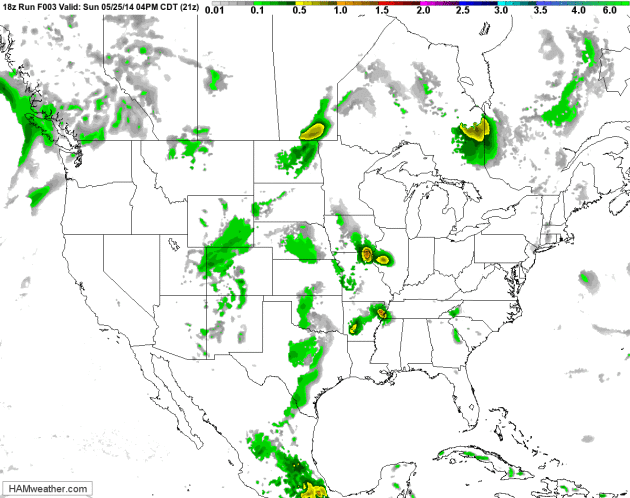
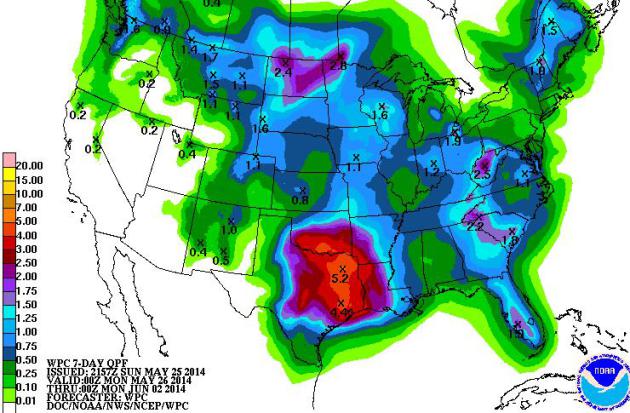
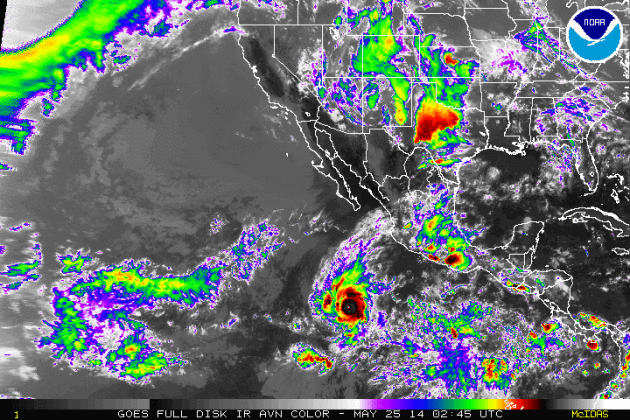
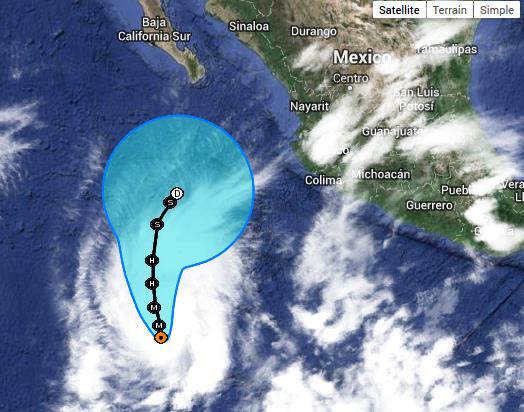
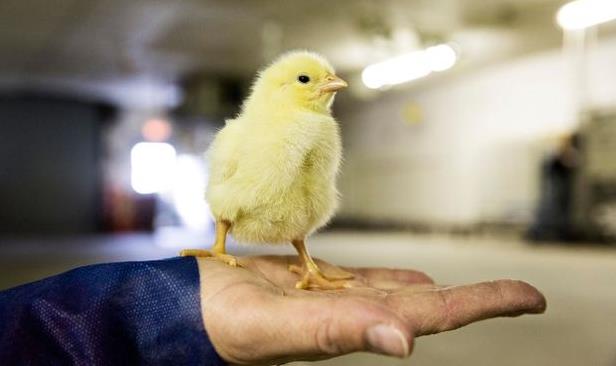
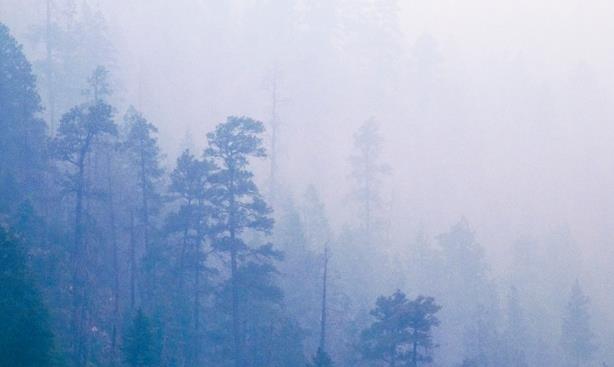

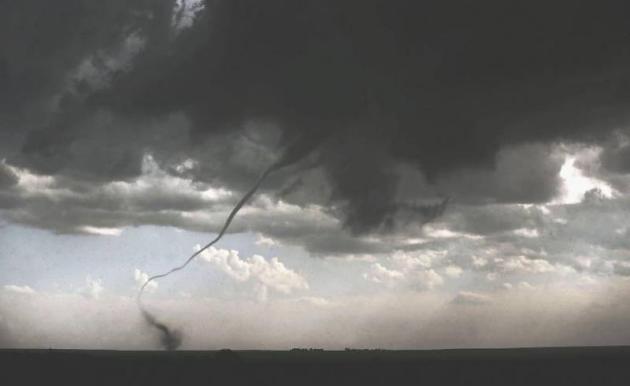
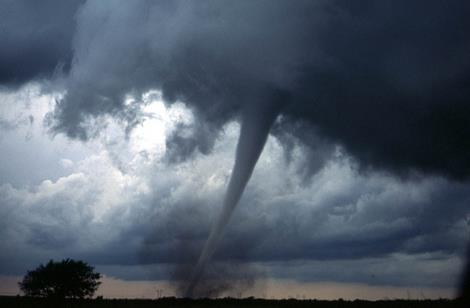
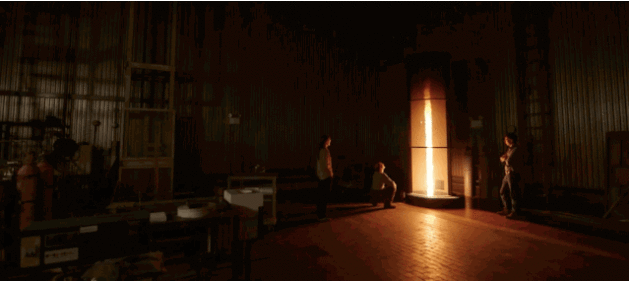



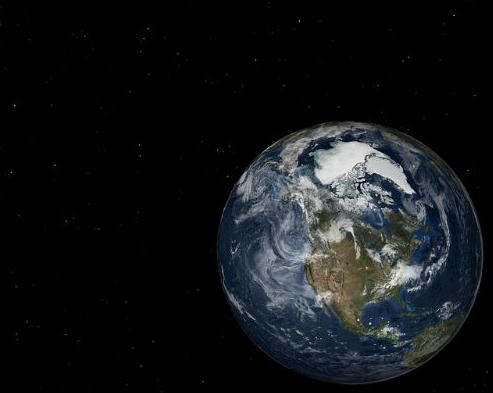
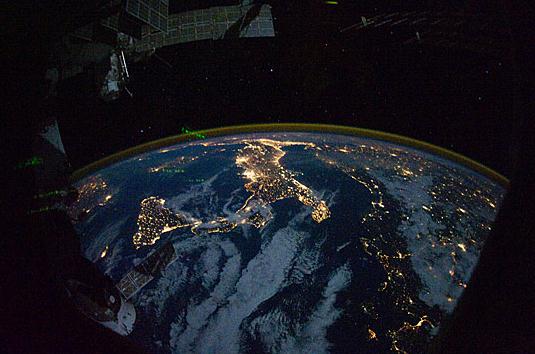



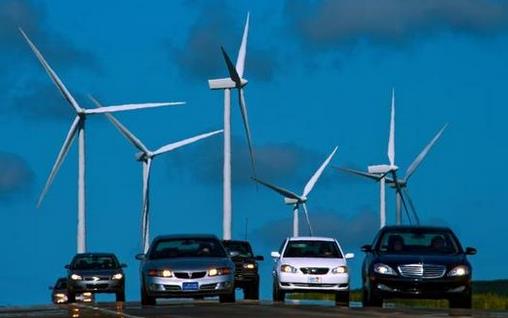
No comments:
Post a Comment